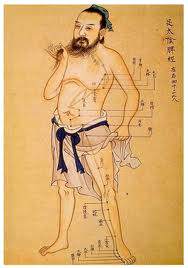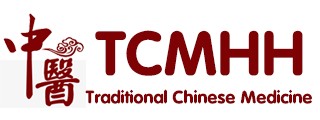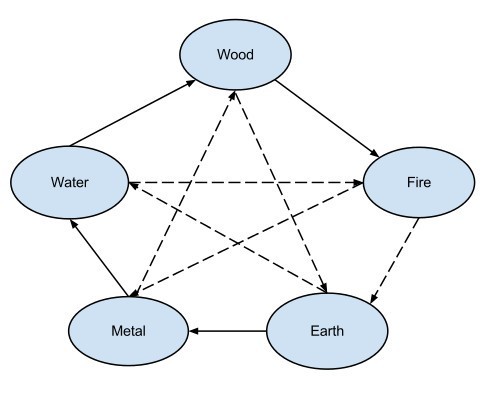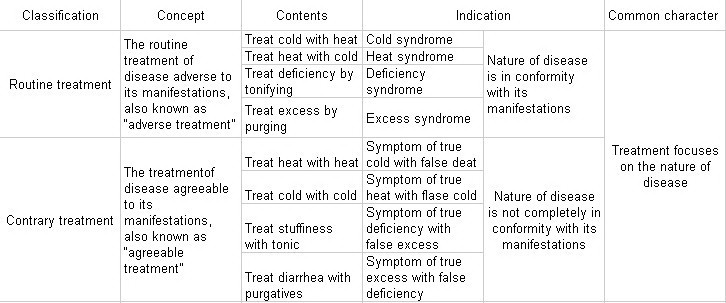
The twelve meridians control human life,yet they are the place where disease can live.If disease starts in the meridians,the physician can use the meridiansto treat the root cause of disease.
——Nei Jing (Classic Chinese text, 475-221 BC)
Meridians and collaterals are the essential component parts of human body structure. The circulation of qi, blood and body fluid, the visceral functions as well as their correlations all depend on the transmitting and regulating functions .f meridians to integrate the human body into an organic whole.
The theory of meridians, which is taken as an important component of the theoretical system of traditional Chinese medicine, concentrates on the study of the distributions, physiological functions, pathological changes of the meridians as well as their relationships with the viscera, body constituents, sense organs and orifices, qi, blood and body fluid.
Physicians in the past dynasties ceaselessly contributed their clinical experience to the supplement and enrichment of the theory of meridians since it formed in Huangdi Neijing. The theory of meridians supplementary to the theory of visceral manifestations, qi, blood and body fluid, has been the theoretical basis explaining the physiological activities and pathological changes of the human body and provides important guidingprinciples for clinical specialties, particularly for acupuncture, moxibustion, massage and Qigong.
Concept of meridians
Meridian is a general term for meridians and collaterals. It serves as the pathway for the transportation of qi and blood throughout the body, thus connecting the viscera with extremities, the interior with the exterior as well as the upper with the lower. Meridians are the main trunks running longitudinally within the body, most of which run deeply inside and follow certain routes. Collaterals are the branches of meridians running reticular over the body. They run deeply or superficially within the body, most of which run in the shallow region and some often give a visible appearance on the surface of the body. The interconnection of meridians with collaterals throughout the body integrates the viscera, limbs and orifices, muscles and tendons into an organic whole, thus ensuring the normal performance of body activities.
Formation of the theory of meridians
1. Elicitation from the pathological and anatomical knowledge
By the method of direct observation, ancient people gained a degree of knowledge about blood vessels, muscles and tendons, bones, viscera as well as the interrelationships between them, thus providing a basis for the formation of the theory of meridians.
2. Deduction of the pathological phenomena over the body
In clinical practice, it has been found that certain visceral disorders may be manifested on the corresponding superficial area of the body, where some pathological phenomena may occur, such as tenderness, nodes, rashes, and changes of luster.
When one viscus becomes diseased, pressing the corresponding superficial area of the body may relieve the pain inside. Hereby, it is inferred that there are special routes associating these acupoints, which serves as another basis for the formation of the theory.
3. Observation and deduction on induction and transmission phenomena of acupuncture and moxibustion
If the needles are accurately inserted into the right acupoints, the patient will feel a feeling of soreness, numbness, heaviness and distention, which is also called"needling sensation" or "Deqi" (arrival of qi) and may also transmit along certain routes to distant areas. When performing the technique of health preservation in Qigong, practitioners who concentrate their mind on Dantian point (the central area below the umbilicus), usually have a sense of qi flowing along certain routes. Such kind of sense and transmission is one important basis for the formation of the theory of meridians.
4. Summarization of the therapeutic effects of acupoints
When trying to summarize and analyze the main therapeutic effects of acupoints, ancient people found that acupoints with similar functions usually rank in the same route in a regular order.
So it is presumed that the acupoints are connected with each other through some particular routes, which shows the great importance to the formation of the concept of meridians.
Composition of meridians
The system of meridian is composed of meridians, collaterals and their subsidiary parts.
1. Main meridians
Main meridians, being the trunk of meridian, may be classified into three categories: regular meridians, extra meridians and divergent meridians.
A. Twelve regular meridians
Twelve regular meridians, also collectively termed as "the twelve main meridians", include three yin meridians of hand, three yin meridians of foot, three yang meridians of hand and three yang meridians of foot. These twelve meridians act as the main pathways in which qi and blood circulate throughout the body. They start and terminate at given sites, circulate along fixed routes, convergent in definite orders, distribute and flow with certain rules and are directly connected with certain viscera.
B. Eight extra meridians
The eight extra meridians refer to eight important vessels different from the twelve main meridians, included the governor vessel, conception vessel, Thoroughfare vessel, belt vessel, yin heel vessel, yang Heel vessel, yin link vessel and yang link vessel. They perform the function of governing, connecting and regulating the twelve regular meridians.
C. Twelve divergent meridians
The branches stemming from the twelve main meridians are referred to as the twelve divergent meridians, which respectively start from the limbs, run deep into the viscera, and emerge from the shallow regions on the neck. The divergent meridians of yang meridians separating from the meridians proper run inside the body arid return to the meridians proper while the divergent meridians of yin meridians separating from the yin meridians proper run inside the body and finally join the yang meridians to which they are interiorly and exteriorly related. The function of the twelve divergent meridians is to strengthen the connection between two meridians in interior and exterior relation.
2. Collaterals
The collaterals are the branches of the main meridians, including the connecting collaterals, superficial collaterals and tertiary collaterals.
A. Fifteen connecting collaterals
The connecting collaterals are larger and major collaterals, which separate from the twelve meridians, as well as the governor and conception vessel respectively. Together with the large splenic collateral, they are so called "the fifteen main collaterals";. The function of them is to strengthen the connection of the exteriorly-interiorly related meridians on the body surface.
B. Superficial collaterals
The superficial collaterals are those running through the superficial area of the body.
C. Tertiary collaterals
The tertiary collaterals refer to the smallest and thinnest branches of the whole body.
3. Subsidiary parts of the meridian system
The subsidiary parts of the meridian system refer to the parts that connect the twelve main meridians with the superficial and muscular portions of the body, including twelve muscle regions and cutaneous region.
A. Muscles along twelve meridians
Muscles along twelve meridians, one of the subsidiary parts of the twelve main meridians, refer to a system where qi of the twelve main meridians "retains, accumulates, scatters and links"; in the muscles and joints, and serve to communicate the extremities with bones and control the movements of the joints.
B. Twelve cutaneous regions
The twelve cutaneous regions are the twelve superficial areas of the body on which the functions of the twelve main meridians are reflected, and also the sites where qi of the twelve main meridians scatters.
Twelve Standard Meridians
Each meridian is a Yin-Yang pair, meaning each Yin organ is paired with its corresponding Yang organ.
Yin (Arm) MeridiansTaiyin Lung Meridian of Hand (手太阴肺经) (LU)Shaoyin Heart Meridian of Hand (手少阴心经) (HT)Jueyin Pericardium Meridian of Hand (手厥阴心包经) (PC)Yang (Arm) MeridiansShaoyang Sanjiao Meridian of Hand (手少阳三焦经) (TE)Taiyang Small Intestine Meridian of Hand (手太阳小肠经) (SI)Yangming Large Intestine Meridian of Hand (手阳明大肠经) (LI)Yin (Leg) MeridiansTaiyin Spleen Meridian of Foot (足太阴脾经) (SP)Shaoyin Kidney Meridian of Foot (足少阴肾经) (KI)Jueyin Liver Meridian of Foot (足厥阴肝经) (LR)Yang (Leg) MeridiansShaoyang Gall Bladder Meridian of Foot (足少阳胆经) (GB)Taiyang Bladder Meridian of Foot (足太阳膀胱经) (BL)Yangming Stomach Meridian of Foot (足阳明胃经) (ST)Eight Extra Meridians
The eight extraordinary meridians are different to the standard twelve organs meridians in that they are considered to be storage vessels or reservoirs of energy. They are not associated directly with Zang fu or internal organs.
Conception Vessel (任脉) (Ren Mai) (CV)Governor Vessel (督脉) (Du Mai) (GV)Thoroughfare Vessel (冲脉) (Chong Mai)Belt Vessel (带脉) (Dai Mai)Yin Link Vessel (阴维脉) (Yin Wei Mai)Yang Link Vessel (阳维脉) (Yang Wei Mai)Yin Heel Vessel (阴跷脉) (Yin Qiao Mai)Yang Heel Vessel (阳跷脉) (Yang Qiao Mai)Circulation rules of the twelve main meridiansNomenclature of the twelve main meridians

